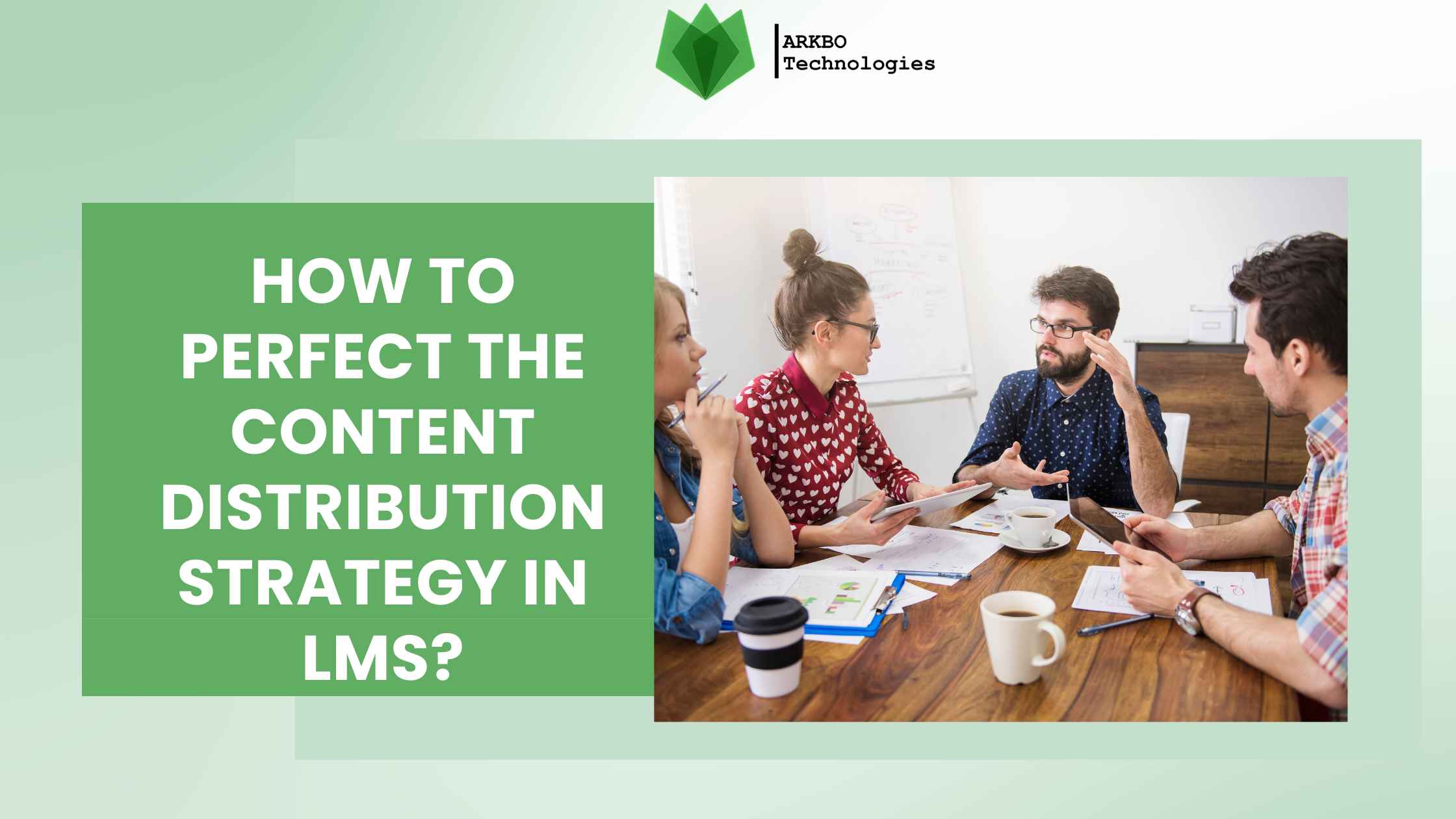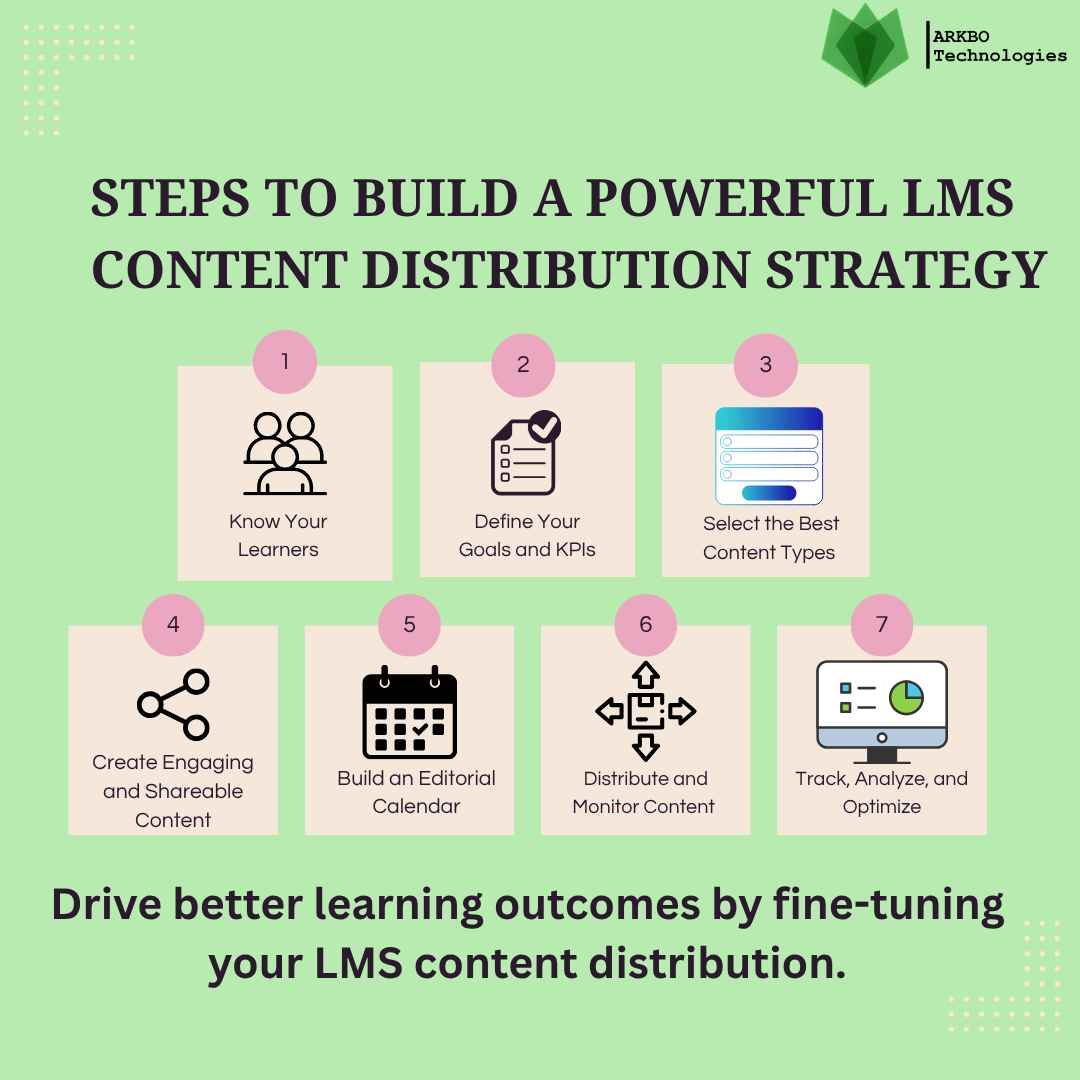
LMS is becoming a favorite among organizations that are planning to offer better training and learning opportunities to their employees. However, the effective use of an LMS depends on how effectively it distributes learning content/materials to the right learners, at the right stage of their journey, and through the right channels.
Whether your organization focuses on employee development, onboarding training, or essential compliance programs, fine-tuning your content distribution strategy is one of the most impactful steps you can take to elevate learning outcomes.
Content distribution in an LMS refers to a process of delivering learning materials to specific learners at specific times, using the most effective pathways available within the system.
It ensures that each learner receives content tailored to their role, skill level, and learning needs, rather than navigating an overwhelming library of courses.
With well-curated content distribution, learners get to have a seamless experience and feel guided, supported, and motivated to engage. Also, administrators can gain clarity and control over how learning flows across the organization.
As we know, content distribution strategy is a crucial aspect when using an LMS. Now, let’s dive into the steps that are needed for content allocation in the learning platform.

First step involves, L&D specialist of the organization to have a deep look into:
Who the learners/employees are
What skills do they have
How they prefer to consume information
What motivates them to complete learning experiences
They can also analyze the past learning activity, review assessment performance, and gather direct feedback through surveys or check-ins. Data and insights from these can be used to shape content that feels relevant and accessible.
2. Define Learning Goals and KPIs
The next step is to ensure your content distribution strategy achieves the goal, such as:
course completion rates
improving learner engagement
strengthening job-specific competencies
When your distribution plan aligns with broader organizational objectives, every learning interaction becomes purposeful and connected to tangible outcomes.
When KPIs are set, it is time to finalize the format of the learning materials. The best strategy is to have a balanced mix of videos, quizzes, simulations, reading materials, and interactive modules. This helps in accommodating different learning preferences.
The trainers or the L&D experts should make the complex topics simpler, structured, while simple concepts might be communicated effectively through short videos or infographics. They should also prioritize the special needs of learners, considering the inclusive and equitable learning opportunities.
Now, it is time to actually craft the content which are engaging to the learners. For engagement, the content has to be dynamic, relatable, and easy to absorb. They must be visually appealing, interactive, and concise.
Also, incorporating opportunities for discussion, peer-to-peer review, or friendly competition through gamified elements adds to learners' involvement. When learners give their full participation, the content naturally becomes more memorable.
5. Build an Editorial Calendar
Once the content and way of its delivery are set, the editorial calendar needs to be made as it brings structure and predictability to the content distribution.
The calendar helps outline when each course or module will be released: weekly, monthly, or aligned with specific milestones. A planned schedule supports consistency and helps learners build skills effectively.
Once your content and calendar are set, it the time to distribute content effectively. Using the LMS automation tools, you can assign content based on roles, departments, or learning paths. This reduces manual work and enhances accuracy.
The reminders through email, in-platform alerts, or push notifications keep training top of mind for learners and increase the likelihood of completion.
As learners begin interacting with the content, it is equally important to monitor their progress, as it helps organizations identify what is working, where learners are dropping off, and what adjustments may be needed.
An interesting thing is that content distribution strategy is never static; it evolves continuously based on performance data and learner feedback. Organizations can track key metrics such as engagement levels, completion rates, assessment scores, and satisfaction with a chosen strategy.
Using these insights, they can refine your strategy. They can improve course design, adjust schedules, or enhance communication methods. With ongoing optimization, your content distribution remains effective and aligned with organizational goals.
Repurpose content by converting existing materials into shorter, microlearning formats to keep employees engaged, especially busy teams.
Promote social learning by encouraging discussion forums, collaborative assignments, and peer interaction to build a strong learning community.
Keep updating your content. You should refresh and optimize materials so learners stay motivated and find continued value in returning to the LMS.
Final Thoughts
Perfecting your content distribution strategy in an LMS can significantly elevate the impact of learning and training. By combining the right channels, formats, insights, and scheduling methods, an organization can create a learning ecosystem. With such LMS content, learners/employees feel guided, personalized, and rewarded.
Have you implemented LMS for training and learning? If not, opt for the best LMS in Nepal - ARKBO LMS. Loved by banks, corporations, and educational institutions, this LMS can make your training and learning more organized, fruitful, and cost-effective. Don’t delay! Book a Demo now!
Read More: Complete Guide to Learning Management System